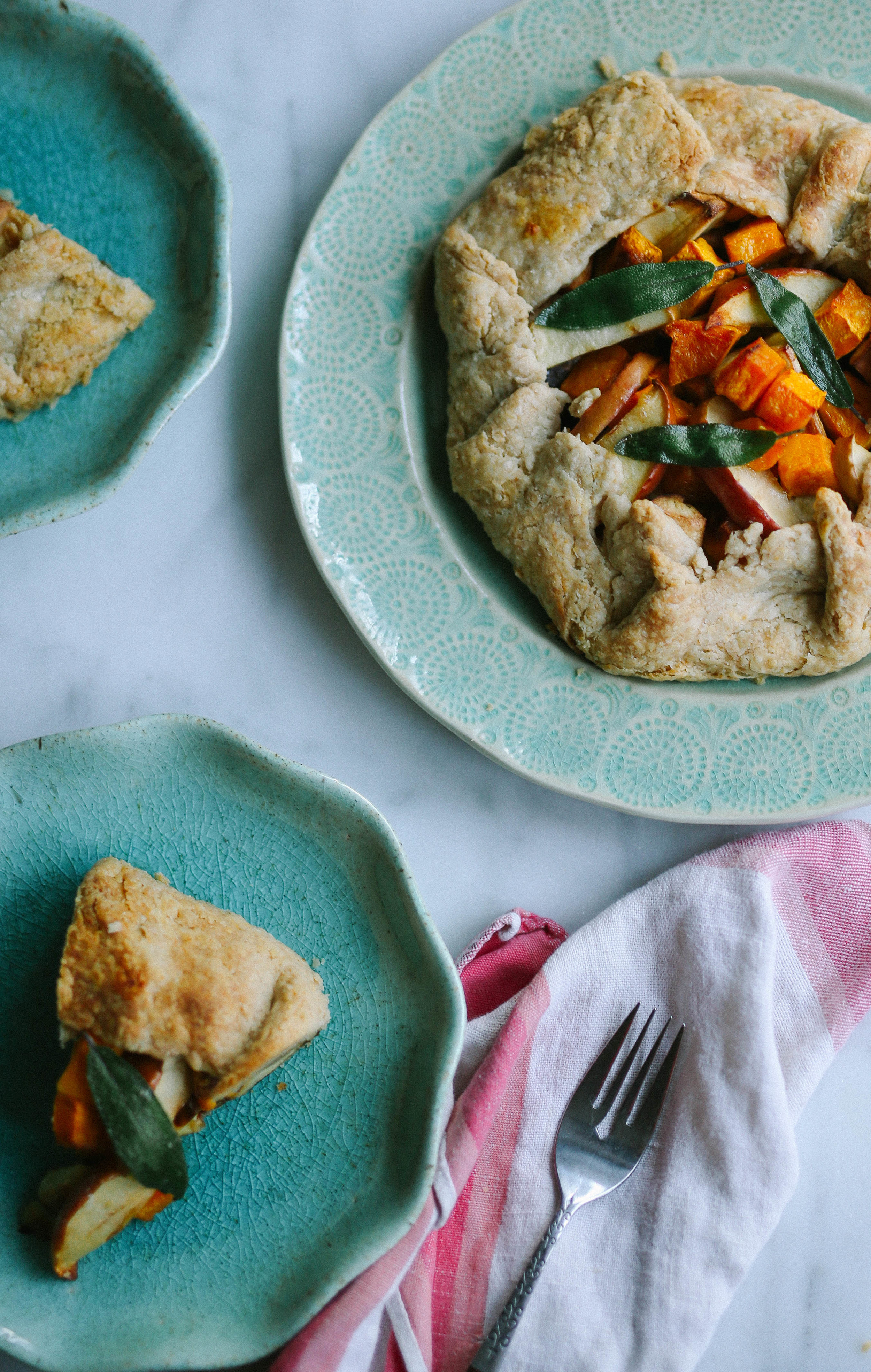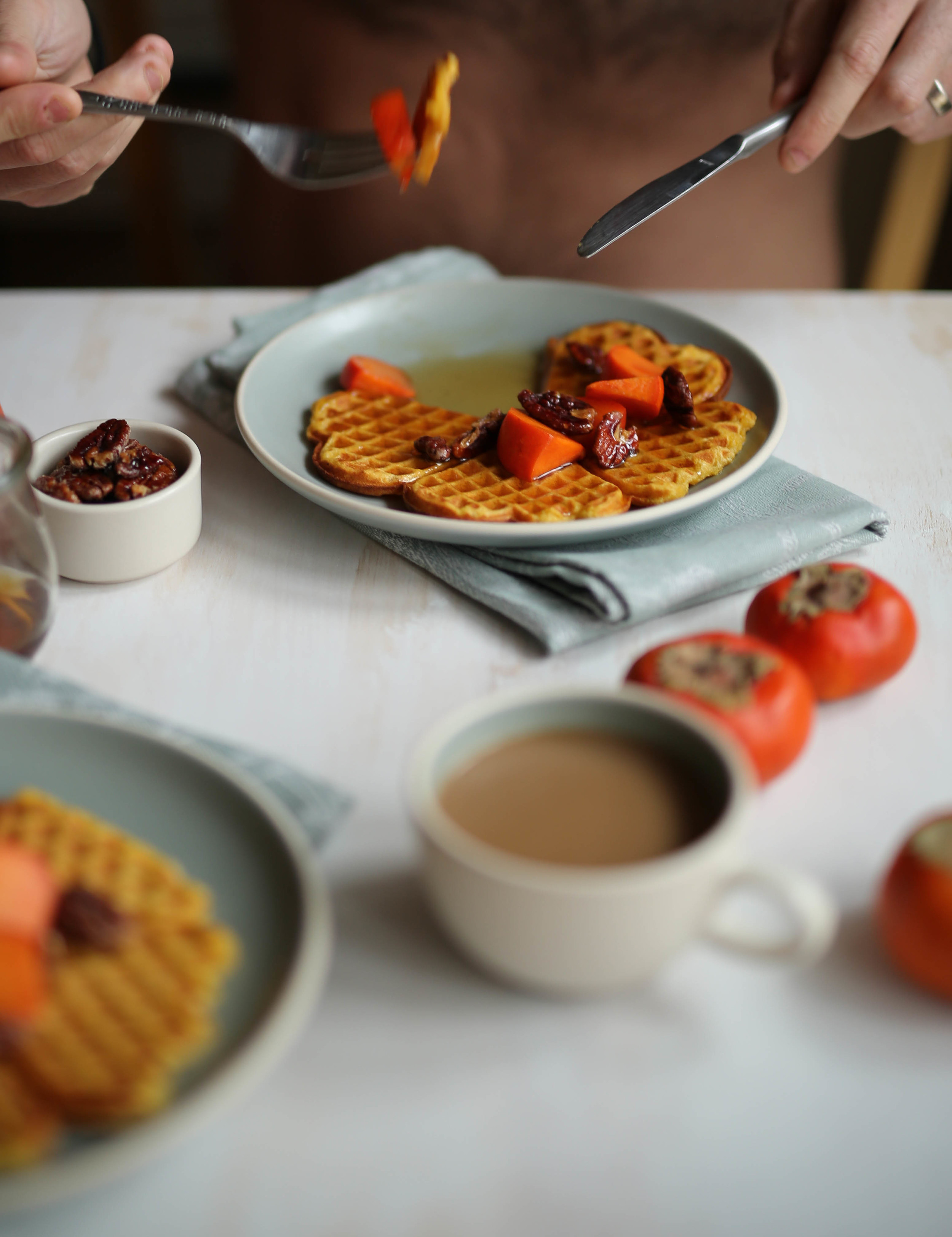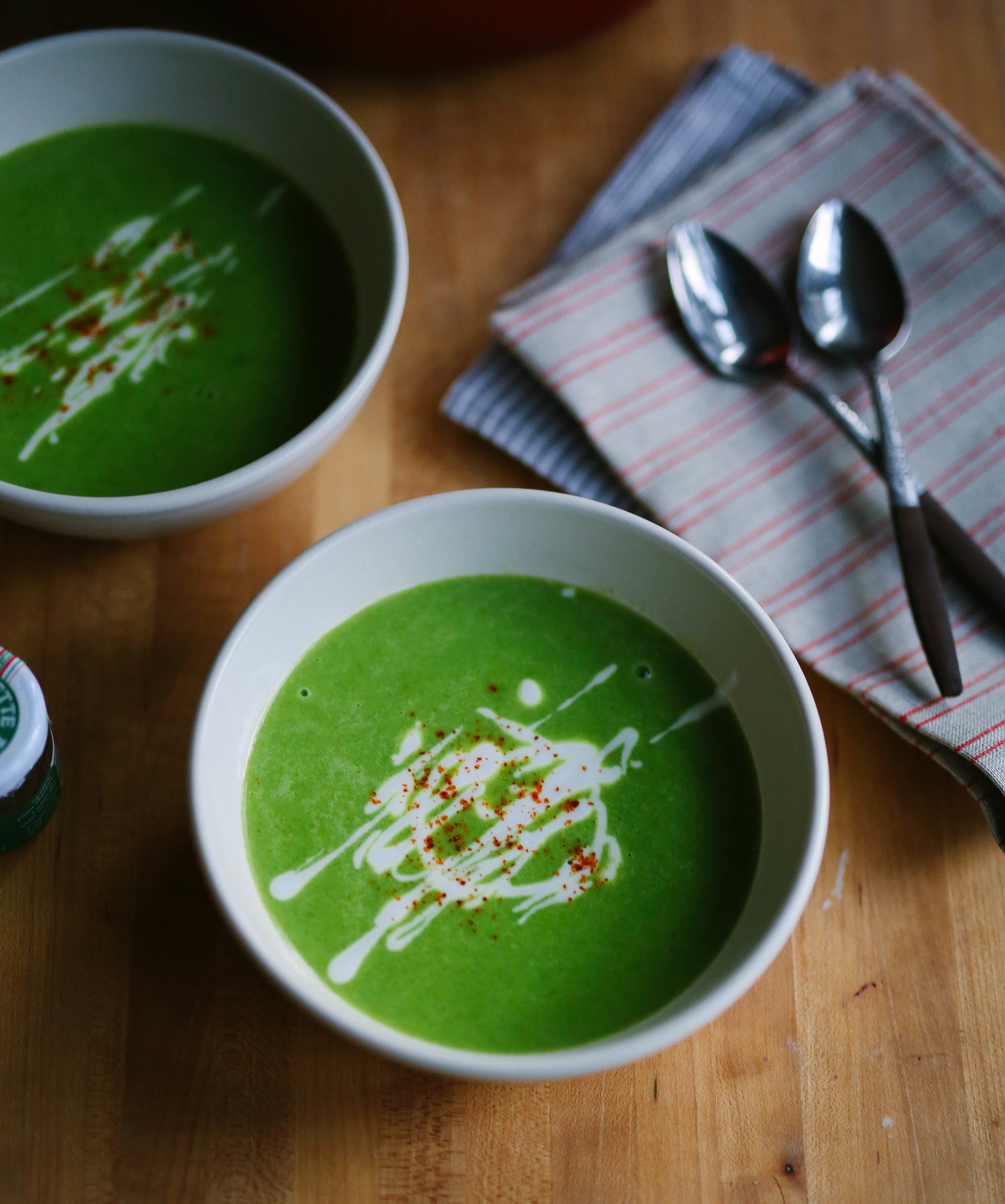Parsnip, Squash, and Apple Galette with Sage-Onion Jam
There is a lot happening with this recipe, but it is easy to make the components in advance and assemble it just before you're ready to bake; you can easily omit a vegetable and increase another if you aren't a fan of parsnips or squash, though I really like the added sweetness of the apples so I encourage you to keep them in the mix. If you prefer a juicier galette, use an apple variety that breaks down during cooking, such as Golden Delicious; for a richer tart, dot the filling with goat cheese before you fold up the sides of the pastry.
Pastry (base recipe adapted from Thomas Keller; additions inspired by traditional flavorings for gougeres) - makes enough for two galettes, two tarts, or one double-crust pie
2 cups all purpose flour
1/2 cup wheat flour
1 teaspoon kosher salt
1/2 teaspoon freshly grated nutmeg
1/2 teaspoon dry mustard
a few good grinds of black pepper
1/2 cup freshly grated hard cheese, such as Pecorino-Romano (which is what I used) or parmesan 2 1/2 sticks cold butter
5 tablespoons ice water (or possibly more)
Sage-Onion Jam
2 tablespoons butter + 1 teaspoon butter, divided
2 medium yellow onions, thinly sliced from top to tail
Kosher salt
2 teaspoons dark brown sugar
A splash of apple cider vinegar
2 tablespoons freshly chopped sage
Filling
3-4 cups roasted vegetables (such as parsnips, carrots, butternut squash, sweet potatoes, or a mixture; I used parsnips and squash, though I might omit the parsnips next time as their flavor is a bit strong)
1 apple (I used a Fuji, because it was what I had on hand, but use whatever you would like; baking apples, such as Granny Smith, will get softer than Fuji)
2 tablespoons butter, divided
juice of one lemon, divided
fried sage leaves for garnish (make by heating a little butter in a pan and frying the sage leaves until crisp but still green)
Make the pastry: combine the all-purpose flour, wheat flour, kosher salt, nutmeg, dry mustard, black pepper, and grated cheese in a bowl, and whisk to combine. Cut the butter into 1/2-inch pieces and drop into the bowl with the flour (alternatively, you may combine the flour and butter in a food processor). Cut the butter into the flour using a pastry cutter, or pinch the butter into the flour with your fingers, breaking up the butter into smaller pieces as you go (or pulse your food processor a few times to break up the butter into smaller pieces). You should end up with pea-sized (or smaller) nuggets/little smears of butter throughout the flour.
Drizzle the ice water over the butter-flour mixture, and mix (or pulse) to combine. The dough should be crumbly, but should stick together when pinched with your fingers (if it does not stick together, add a little more water, a tablespoon at a time). Press the dough into itself a couple of times while still in the bowl, just until you're sure it is mostly coming together. Turn the dough out onto a work surface, and divide it into two equal (albeit, crumbly) pieces. Press each piece into a flat disk, and wrap both tightly in plastic wrap. Set in the fridge to chill for at least one hour, or up to three days (the dough will be eatable after this point, but the flour may oxidize and become grayish).
Make the sage-onion jam: melt the butter in a heavy-bottomed pan set over medium-low heat. Add the onions, and stir to coat evenly with the melted butter. Add a pinch of salt to let the onions sweat; you want them soften at this point, but not brown. Listen to the onions as they sweat, and if you notice that the sound seems loud, it is likely that your pan is too hot and the onions are beginning to crisp. Stir occasionally so that the onions cook evenly.
Once the onions have softened, add the dark brown sugar and turn up the heat to medium. Let the onions cook, stirring occasionally, so that the sugars caramelize and the onions begin to brown. They will move from pale beige, to golden brown, to a light caramel. Once they reach this light caramel stage, turn up the heat a notch, add the vinegar, and stir to scrape up any onion bits stuck to the pan. Continue cooking the onions until they reach a deep caramel color.
Scoot the onions to one side of the pan, and melt the teaspoon of butter in the empty space in the pan. Add the sage to the melted butter, keeping it separate from the onions while it cooks. Once it has crisped and the color has changed to a dark, muted green (this will take about a minute), mix the sage into the onion mixture. Cook for a minute or two more, stirring frequently, then remove from the pan and let cool. Scrape the mixture out onto a cutting board, and run your knife through it a couple of times (this will make the mixture less stringy and more jammy). Taste and add additional salt if needed. Set aside, or refrigerate in a covered container for up to 1 week.
To fill and shape the tarts: preheat the oven to 375 degrees F, and line a baking sheet with parchment paper. Remove the pastry disks from the fridge, and let sit, still wrapped, at room temperature for 10-20 minutes. Unwrap one disk, and place it on a lightly floured work surface. Roll the pastry into a 1/8" thick circle, and transfer to one side of the parchment lined baking sheet.
Slice the apple into pieces, and set aside. Spread half of the sage-onion jam in the middle of the pastry round, leaving a 2-inch border of bare pastry. Mound half of the roasted vegetables on the jam, and tuck half of the apple slices among the vegetables. Fold the pastry up and over the vegetables, overlapping the folds so that there are no places where the filling can escape. Once the pastry is all folded, press around the tart gently to seal the pastry folds. Gently scoot the galette to one side of the pan to make sure there is enough room for the second galette. Repeat with the second pastry disk and remaining vegetables and jam.
Once both galettes are filled, cut one tablespoon of butter into pieces and scatter over the top of both tarts. Sprinkle the exposed vegetables and apples with the lemon juice. Bake at 375-degrees for 15 minutes, then lower the heat to 350 and bake for another 10-20 minutes, or until the pastry is fully cooked and golden brown. Top with the fried sage leaves, and serve warm or at room temperature with a green salad. You may also refrigerate the tart for up to two days;let it come to room temperature, or rewarm it in a 300-degree oven for 10-15 minutes before serving.












